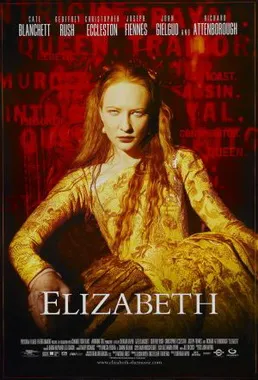Historical accuracy of Elizabeth

Historical accuracy of Elizabeth

Characters
Queen Elizabeth I
While Cate Blanchett's portrayal captures Elizabeth's strength and intelligence, some dramatic liberties were taken with her personal relationships and the timeline of events.
Robert Dudley, Earl of Leicester
Dudley's closeness to Elizabeth is well-documented, but the film's portrayal of their relationship is romanticized. His political maneuvering and influence are depicted accurately in general.
Sir Francis Walsingham
Walsingham's role as Elizabeth's spymaster is accurately depicted. His dedication and methods, while sometimes ruthless, were instrumental in securing her reign.
Mary of Guise
Mary of Guise's role as the mother of Mary, Queen of Scots, and her influence on Scottish politics is portrayed with relative accuracy. Her political strategies and alliances are well-documented.
Duke of Norfolk
The Duke of Norfolk's involvement in plots against Elizabeth is a matter of historical record. His role in the Ridolfi plot is a key part of the film's narrative.
William Cecil
William Cecil was Elizabeth's trusted advisor and chief minister. The film portrays his influence and guidance in navigating political challenges.
Story
Elizabeth's imprisonment
Elizabeth was imprisoned in the Tower of London by her half-sister, Queen Mary I, under suspicion of treason.
Relationship with Robert Dudley
Elizabeth had a close relationship with Robert Dudley, Earl of Leicester. The film portrays their affection for each other, although the extent of their intimacy is debated by historians.
Assassination attempts
Elizabeth faced numerous threats and assassination attempts throughout her reign. The film depicts some of these plots, highlighting the dangers she faced.
Elizabeth's transformation
The film portrays Elizabeth's transformation from a young, vulnerable woman to a powerful and decisive queen. This transformation reflects her growth as a ruler and her embrace of her royal authority.
Relationship with Mary of Guise
The film depicts a rivalry between Elizabeth and Mary of Guise, the Queen Regent of Scotland. While they were political rivals, the film may exaggerate their animosity for dramatic effect.
Elizabeth's virginity
The film portrays Elizabeth as the 'Virgin Queen,' but historians debate whether she remained unmarried for political reasons or personal choice. The film leans towards the political interpretation.
Setting
Religious conflict
The film highlights the religious tensions between Catholics and Protestants in England during Elizabeth's reign. This conflict was a significant challenge for her as she navigated political and religious factions.
Elizabeth's court and advisors
The film provides a glimpse into Elizabeth's court and the various advisors and courtiers who surrounded her. However, it may not fully capture the complexities of court politics and intrigue.
Elizabeth's fashion and appearance
The film's costumes and makeup accurately reflect Elizabeth's iconic style and her use of fashion to project power and authority.
Overall
Overall historical accuracy
While the film captures the essence of Elizabeth's early reign and her challenges as a young queen, it takes some creative liberties and condenses events for dramatic effect. It's best viewed as a historical drama inspired by true events rather than a strictly accurate account.
The real history behind Elizabeth
The early years of Elizabeth I
Elizabeth I's early life was fraught with peril. Born in 1533, she was the daughter of Henry VIII and Anne Boleyn. Her legitimacy was questioned after Anne's execution, and she was declared illegitimate, losing her place in the royal succession. Her childhood was marked by uncertainty and political intrigue.
Despite the challenges, Elizabeth received a superb education, mastering languages and developing a sharp intellect. During her half-sister Mary I's reign, Elizabeth was suspected of involvement in plots and was imprisoned in the Tower of London. Though her life was threatened, she maintained her composure.
Upon Mary's death in 1558, Elizabeth ascended to the throne. The circumstances were complex. Mary's reign had been turbulent, and England was divided. Elizabeth, as a Protestant, was welcomed by many, but faced religious and political challenges. Her ascension, though fraught with potential obstacles, marked the beginning of a golden age for England. Her early experiences shaped her into a shrewd and resilient ruler.
